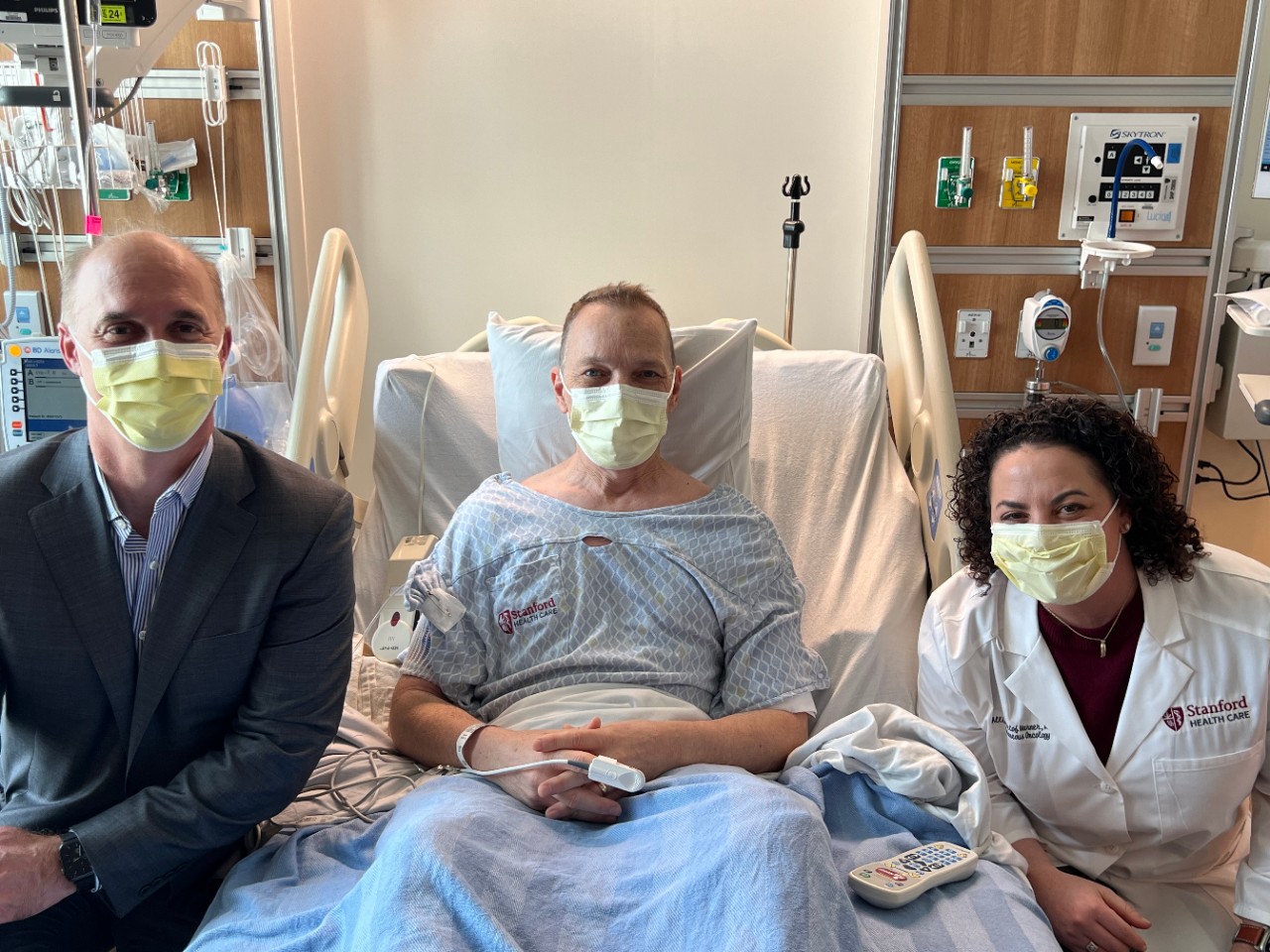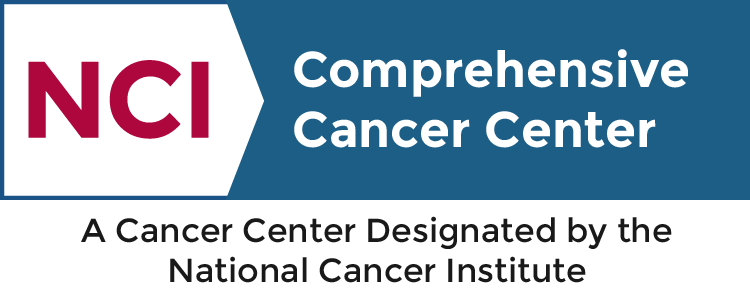In February 2024, the Food and Drug Administration (FDA) greenlit the first cellular therapy to treat solid tumors. Lifileucel (Amtagvi) leverages immune cells called tumor-infiltrating lymphocytes (TILs) and is now approved to treat melanoma, the deadliest form of skin cancer. This novel therapy holds promise for treating a wide array of solid tumors, which collectively account for 90% of all cancer cases.
Thanks to the partnership with Stanford’s Advanced Melanoma Program and Blood and Marrow Transplantation (BMT) & Cellular Therapy Program. Stanford treated the first patient in the world with the approved therapy in April of this year.
T cell transfer therapy
T cell transfer therapy utilizes a patient’s immune cells to recognize, attack, and kill tumor cells. It has two primary modalities: chimeric antigen receptor (CAR)-T cell therapy and TIL therapy. Both methods involve extracting a patient’s immune cells, expanding the cells in a lab, and infusing them back into the patient.
CAR-T cell therapy, primarily employed to treat blood cancers, utilizes naïve T cells that do not specifically target a tumor. T cells are obtained from the patient’s blood and are engineered in the lab to produce a CAR protein, which enables T cells to target and attack cancer cells more effectively by binding to specific proteins on their surface.
“That works well for blood cancers that often have a shared target, but many solid tumors don't have that type of shared target. TIL comes at this a different way,” explains Stanford Cancer Institute member Allison Betof Warner, MD, PhD. Betof Warner is the director of the Advanced Melanoma Program and Solid Tumor Cellular Therapy group and oversees a dedicated melanoma research lab.
Unlike CAR-T cell therapy, which obtains T cells from the blood, TIL therapy uses T cells isolated from surgically removed material next to or within the tumors. The cells are then tested in a lab to identify which ones best recognize the tumor, and those cells are grown in large quantities. The rationale behind this approach is that the lymphocytes in or near the tumor have already shown the ability to recognize tumor cells. However, their naturally occurring numbers may not be significant enough to kill the tumor or counteract the signals emitted by the tumor to suppress the immune system. Externally cultivating a larger number of the most effective tumor-reactive lymphocytes and providing the patient with their own cells in greater quantities can help overcome these obstacles.
“We give those T cells back in very high doses with the hope that they will target the tumor and overpower it.”
Although TIL therapy has existed for over thirty years, recent technological advancements and improvements over the past five to ten years have transformed it into a viable treatment option for patients. In clinical trials, 31% of patients experienced tumor shrinkage or complete response, while 78% achieved stable disease or some form of disease response.
Building bridges
The collaboration between Stanford’s Advanced Melanoma Program and the BMT & Cellular Therapy Program has been pivotal in establishing Stanford as the inaugural institution to provide the newly approved treatment to advanced melanoma patients.
“Stanford's BMT cellular therapy Program is really amongst the best in the world. We have been building on their incredible work to bring cellular therapy to a whole new population of patients, and this is where Stanford really shines,” says Betof Warner.
With extensive experience in CAR-T cells and engineered T cell receptor (TCR-T) therapy, the BMT & Cellular Therapy Program has established robust processes that ensure a smooth workflow for these patients. However, introducing TIL therapy brought forth new logistical challenges, necessitating entirely new workflows.
“We needed to figure out how to tap into their systems. For example, we didn't have a procedure in place for the cell therapy facility to come to the operating room after we've done surgery to take out a tumor.”
Betof Warner hit the ground running when she started at Stanford just over a year ago.
“I have been working on building those bridges between the solid tumor doctors and our surgical teams and then integrating these patients into the BMT cellular therapy Program.”
From clinical trials to real-world impact
On April 4, 2024, Betof Warner and her team achieved a historic milestone by conducting the world's inaugural commercially approved lifileucel infusion for advanced melanoma.
“What an absolutely exciting time,” exclaims Betof Warner.
Betof Warner was recruited to Stanford last year in hopes of bringing TIL technology with her. Previously, she served as the principal investigator of TIL melanoma trials at Memorial Sloan Kettering Cancer Center. She has witnessed firsthand the progression of TIL therapy through clinical trials culminating in its FDA approval.
“To see this come to life and offer a new treatment option for patients who were previously told that they didn't have any options is really exciting. Our first patient’s cancer had grown through every standard treatment option available for melanoma. It's a new source of hope for patients.”
Stanford has around eight additional advanced melanoma patients awaiting to receive this therapy.
“We're accumulating patients very quickly. It is really neat to see not just the product approved but also becoming genuinely accessible to patients, allowing them to come to Stanford and receive this brand-new therapy.”
The rigors of treatment
Although TIL holds tremendous promise, it is not suitable for all advanced melanoma patients. Patients need to be fit to undergo the demanding treatment. Their melanoma needs to be progressing on standard therapy, but not so rapidly that they can't afford to wait for cell manufacturing. Given the narrow window of opportunity, the team strives to complete all necessary assessments within two to three weeks to ensure that delays don't hinder patients' access to the therapy.
The rigorous screening process involves body scans, brain scans to rule out brain metastases, and evaluations of heart, lung, kidney, and liver function. During the screening process, they meet with a surgeon to ensure they're suitable candidates for surgery. Subsequently, they're reviewed by the cellular therapy program to confirm appropriateness from their perspective.
Unlike CAR-T cells, which have significant toxicity, TIL cells have few side effects. However, the approved TIL treatment regimen comprises other physically challenging medications, including conditioning chemotherapy. Chemotherapy eliminates immune cells that may reduce a patient's likelihood of responding to TIL treatment. Following TIL cell infusion, patients undergo treatment with interleukin-2 (IL-2), which is a stimulatory medicine needed to maintain TIL cell viability and activity.
“IL-2 is the hardest part of the regimen. It needs to be managed very, very carefully,” states Betof Warner.
Betof Warner's lab is analyzing patient samples to better understand which individuals are more likely to benefit from this treatment. The aim is to spare those less likely to benefit from the taxing treatment.
“We are really focused right now on trying to understand what characteristics of the patient, tumor, and TIL cell make someone more or less likely to respond to TIL therapy so we can help select the right patient at the right time on their journey.”
The lab also investigates why patients might be resistant or develop resistance to this therapy so that they can work on engineering these cells to be even better for the next-generation treatment.
One and done
The real promise of this therapy is that, unlike other metastatic solid tumor treatments, TIL is a one-time treatment.
“I always say, this is the ‘go big approach.’ It is a big lift upfront, but then it's the opportunity to potentially live without any further treatment for your cancer. We've never had an option like that for a solid tumor patient, and that is really exciting.”
Of the patients who responded in the clinical trials, 42% had not required additional melanoma therapy at the 18-month mark. This trend is anticipated to continue as patients are monitored over time.
Expanding the landscape of TIL therapy
Although only currently approved to treat melanoma, TIL therapy holds immense potential in the treatment of a wide array of solid tumors. At Stanford, clinical trials for TIL cell therapy are underway for lung cancer with plans to expand to colon, cervical, head, neck, breast, and other cancers soon.
Betof Warner and her team are working diligently to improve TIL therapy by engineering cells to enhance their potency and boost patient response rates. Additionally, efforts are underway to modify the cells so patients may not require the challenging IL-2 treatment. A new clinical trial utilizing an alternative method to stimulate the cells without IL-2 and potentially widen the eligibility criteria for patients will be opening soon. Furthermore, there's ongoing research into extending TIL therapy to patients with brain metastases.
“We are now thinking much more broadly about TIL therapy. With the approval of a safe and effective drug, we are now focused on iterating and refining the treatment to apply it more broadly and help a lot more patients.”
By Sarah Pelta
May 2024



